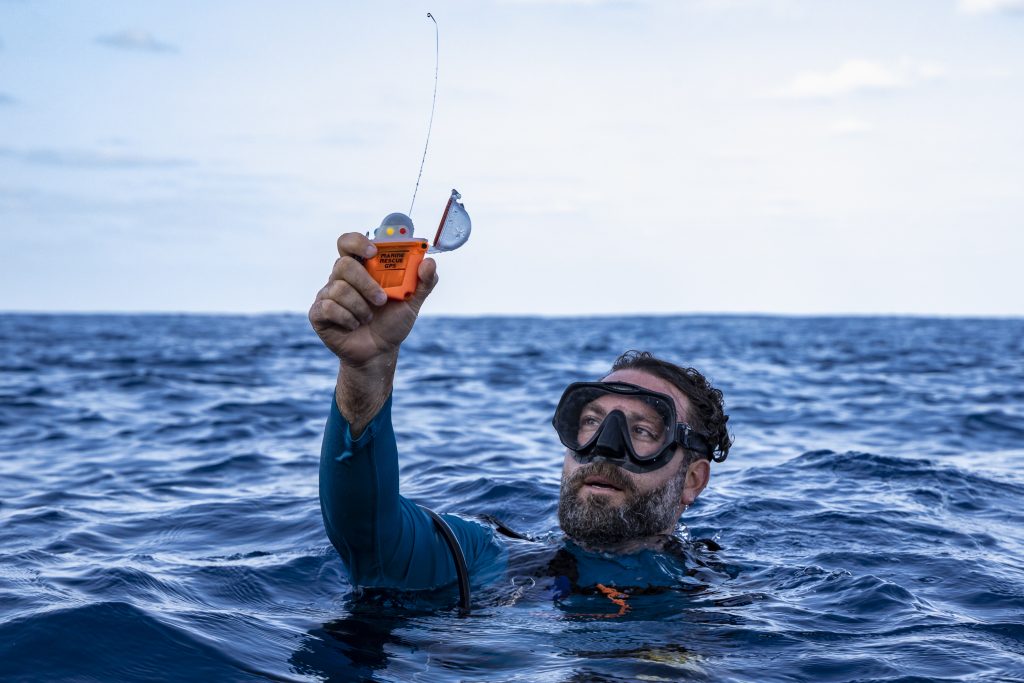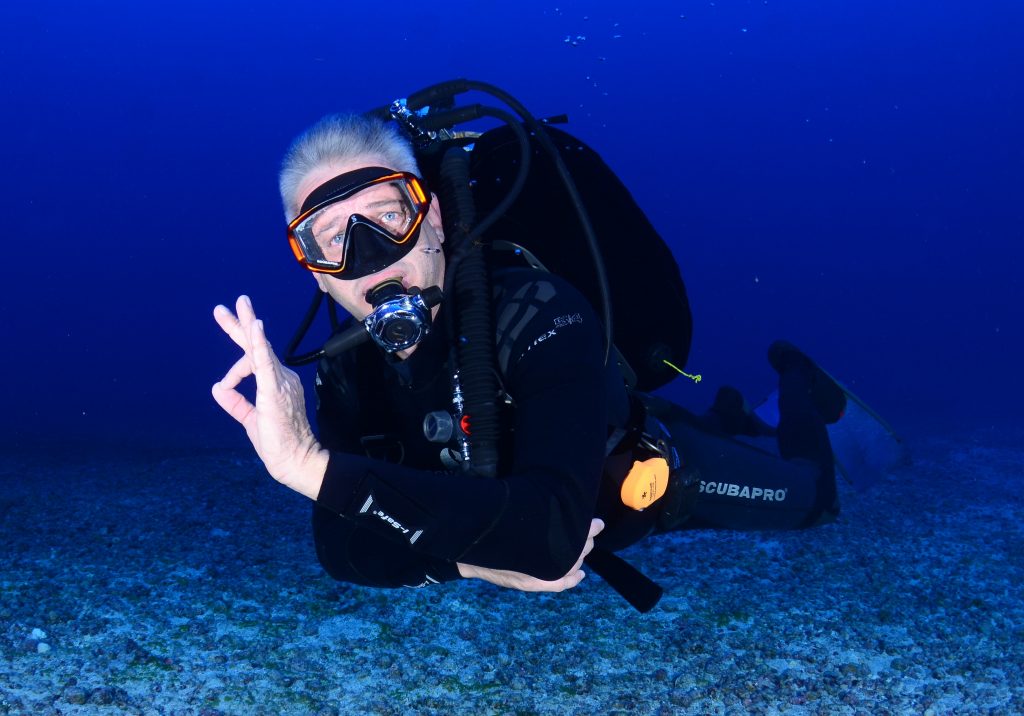Have you ever imagined or experienced drifting away from your yacht whilst doing water sports? Wind, current, fog, faulty equipment, bad orientation, loss of your buddy, etc.; the scenarios are multiple, and it seems that they happen more often than people are willing to admit.
The first time I saw a Dive Alert device was in 2013 while working for two new vessels specialising in diving expeditions in the Galapagos Islands. Local park ranger and dive guide Nicolas Schiess showed me one of these small radio beacons and explained that these should be mandatory for all divers within the National Park of the Galapagos Islands. No law supported this, but every diver on board the ships we were working for had to be equipped with one.

What is a Dive Alert device exactly?
It is an individual, waterproof, and robust radio beacon suitable for any water sport (scuba diving, paddle-boarding, kayaking, kitesurfing, freediving, surfing, remote tender excursions etc.), created and designed to mitigate the risk of getting lost at sea.
A small marine rescue GPS which emits an AIS and DSC signal when activated. The GPS position should be accurate to 1.5 m (5 ft.), and a man overboard distress message (MOB) will be broadcasted to all AIS-equipped ships up to 34 miles away, as well as a Digital Selective Call (DSC) message to the VHF radio on your vessel. The beacon has a test function and an emergency function. The device floats and is waterproof in all sea conditions and is depth-rated to 130 m (425 ft.) with the cap closed. Furthermore, it is free to use, meaning that no MMSI, Licence, or Registration is required.

To the test!
In 2022, as I led a conservation initiative in Fernando de Noronha (Brazil) and shortly after, I headed for a filming expedition to the remote islands of Revillagigedo (Mexico), I decided to get myself one of these Dive alert devices.
I ordered one unit online, and in less than two weeks, a much smaller unit than I remembered from 2013 was delivered to my doorstep. I was so excited about the arrival of my package that I wanted to test the Dive alert system to understand how it worked. So, I called a colleague whose bridge is equipped with not only an AIS but also an ECDIS, and we decided to meet for a coffee and a ‘false alarm’. We used the test mode of the device, which appeared on the AIS control and simultaneously on the ECDIS.
The second time we tested the device, we wanted to try it from the water, which we did after a dive off the remote island of Fernando de Noronha (Brazil). On this occasion, we decided to send out a MOB distress alarm. It was planned to be very short, and we had previously informed the military radio station, which is the only one on the island capable of receiving AIS signals.
For the DSC signal on the VHF radios, we were interested to see if any smaller boats operating from the island would react to a short DSC call. No other vessels would be in reach from the mid-Atlantic Island at 300Nm from mainland Brazil. All went as planned, and only the largest vessel of a dive operator on the island reacted accordingly to the distress. We realised that the main reason for the lack of response was that few boats from the local fleet had their VHF radio connected to their GPS unit. This unappropriated installation of the equipment might be frequent in Brazil but relatively rare in the yachting or professional industry.
Scuba diving with the device is easy, as its small size allows you to carry it inside your BCD’s pocket or can be attached to your dive gear through a specifically designed little pouch. The pouch has a little carabiner to which the device can be clipped. Even if you do not buy the pouch, a little ring on the beacon allows you to attach a short line to avoid losing it when deployed.

How does the beacon work?
Once taken out of its case, its use is straightforward and user-friendly. First, you open the cap and unfold the small antenna before switching on the device through a blue on/off push button that activates a blue indicator light.
Furthermore, a red and a yellow button are available to select one of three options:
- DISTRESS (red button): In case of an emergency, push the red button for five consecutive seconds.
- TEST: Push the Yellow button (Test mode) for 5 seconds, sending a test signal to all AIS. After 20 seconds, the device emits the test signal to the AIS.
- POSITION REPORT: Push the Yellow button (Test mode) for 8 seconds, sending a test signal to all surrounding AIS and a DSC to the programmed MMSI number of the unit. An MMSI can be programmed through an app. Note that the operations manual mentions that the option is not available in Canada and Europe (due to local regulations) but is available when you are somewhere in the rest of the world. Therefore, when in Canada and Europe, only an AIS signal will be transmitted.
We have become Sales Representatives!
You can buy the Dive alert system from us at factory price and you will simultaneously support one of Dive Operations Buddy’s Marine Conservation project at no additional cost.
Contact us for more information: info@diveoperationsbuddy.com
Stay safe out there,
Capt. Dominique Geysen



